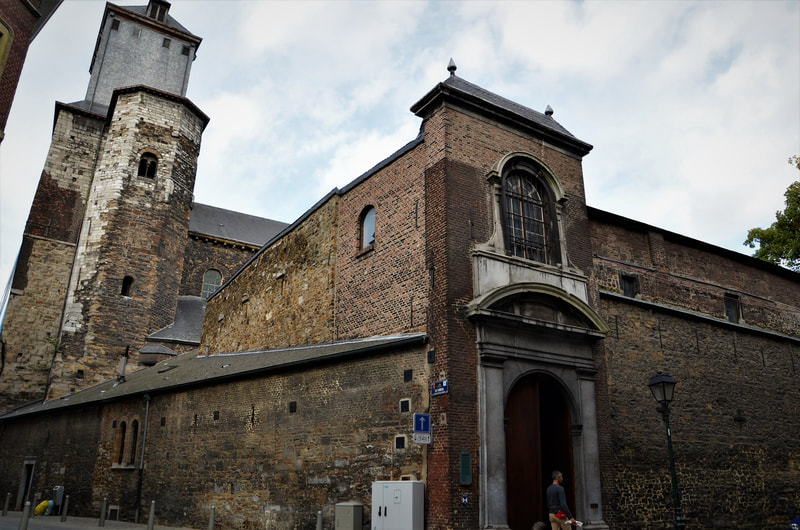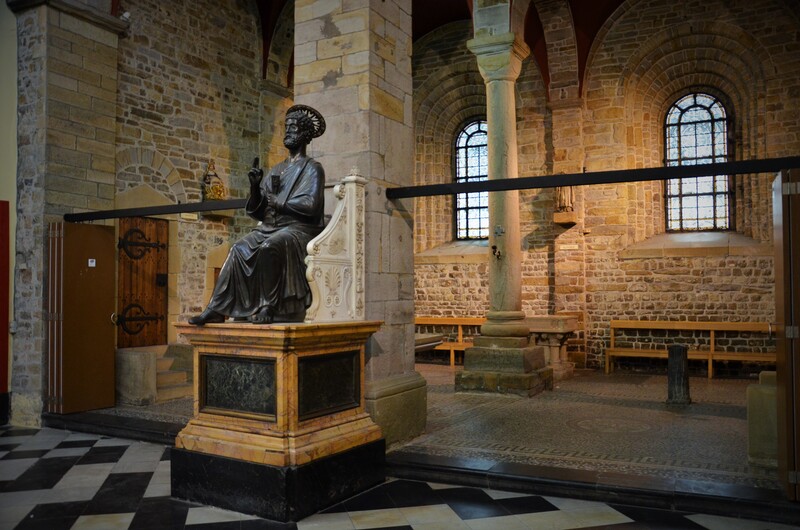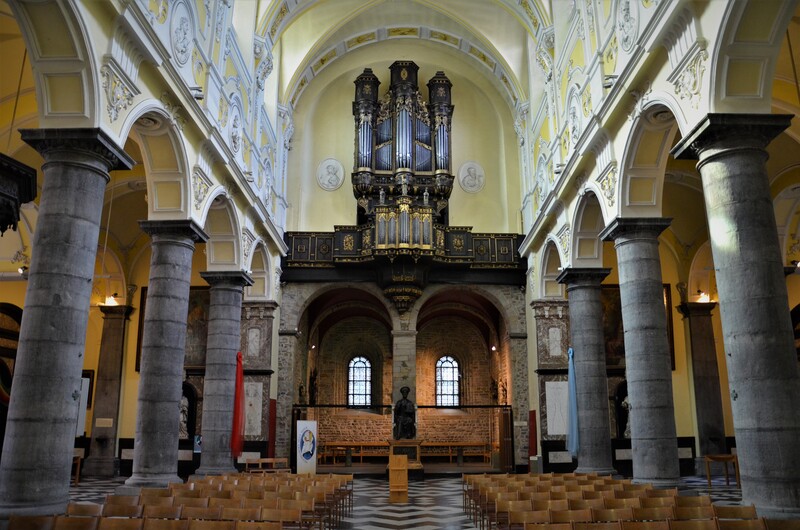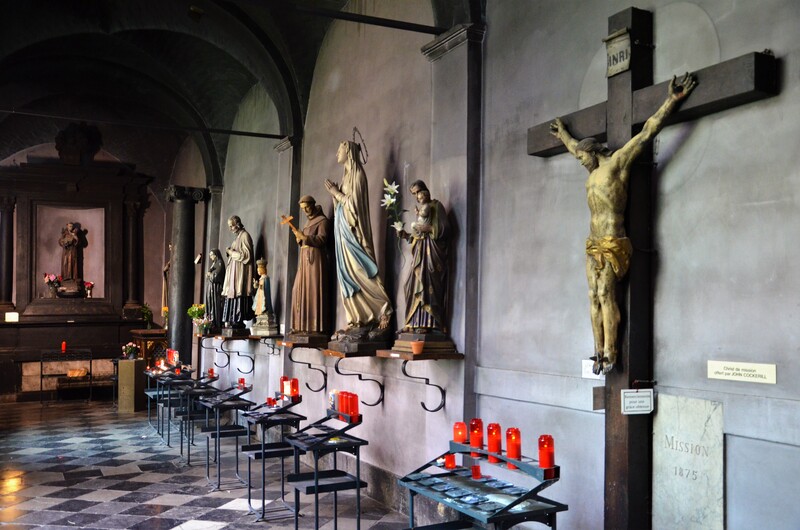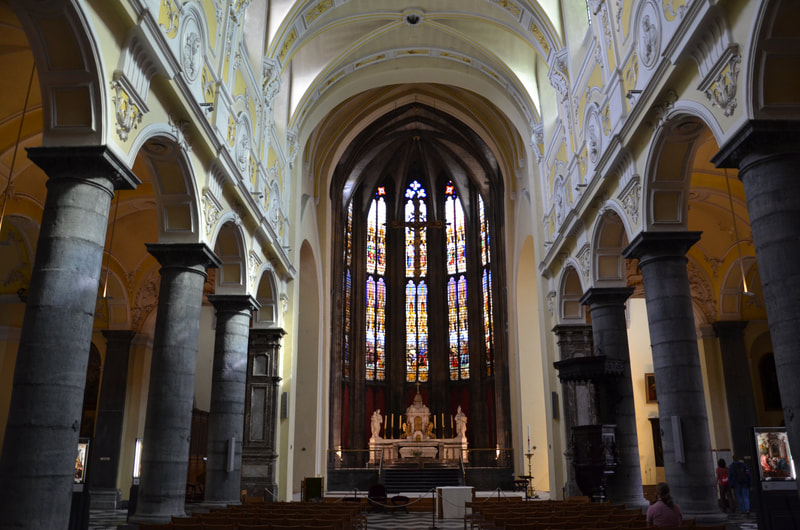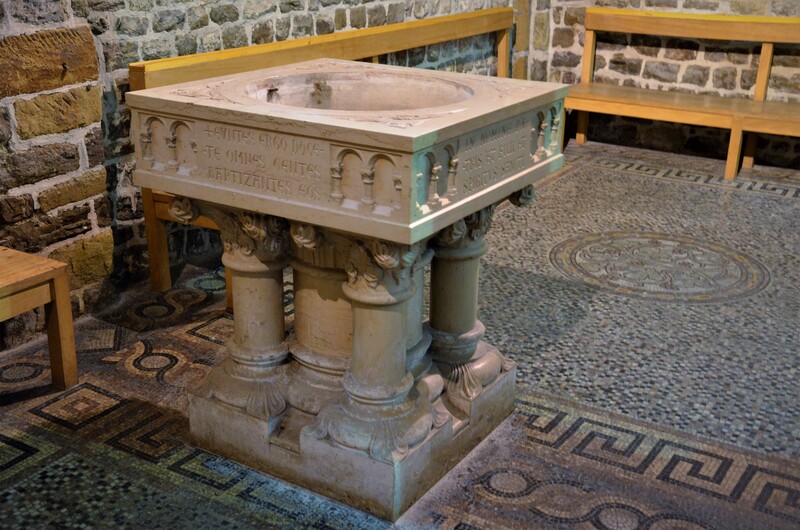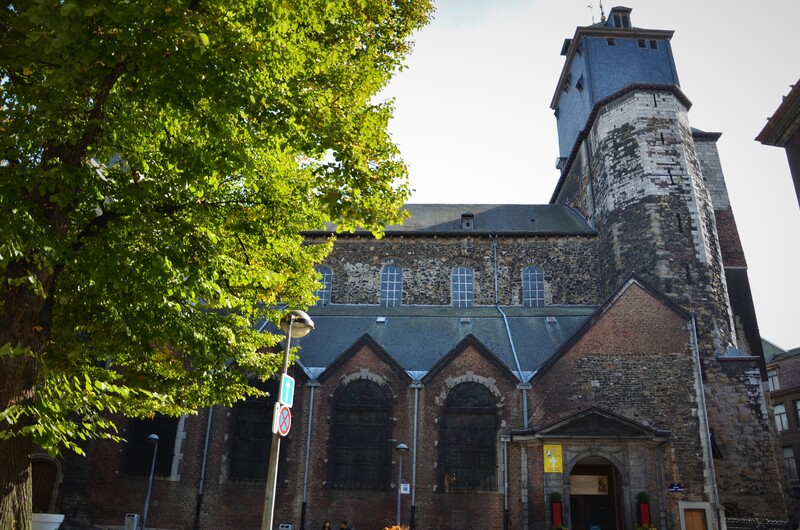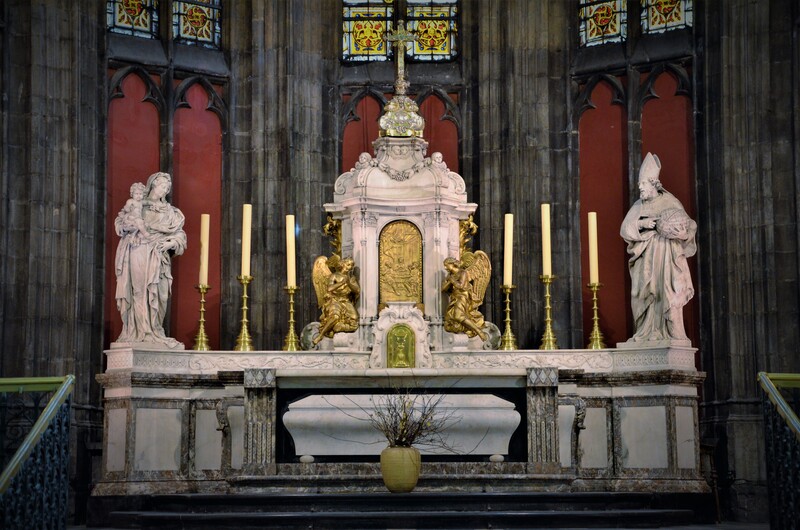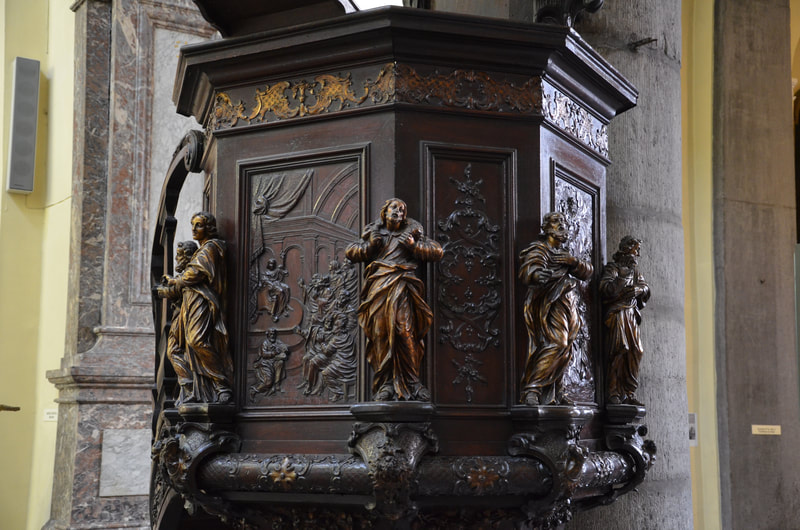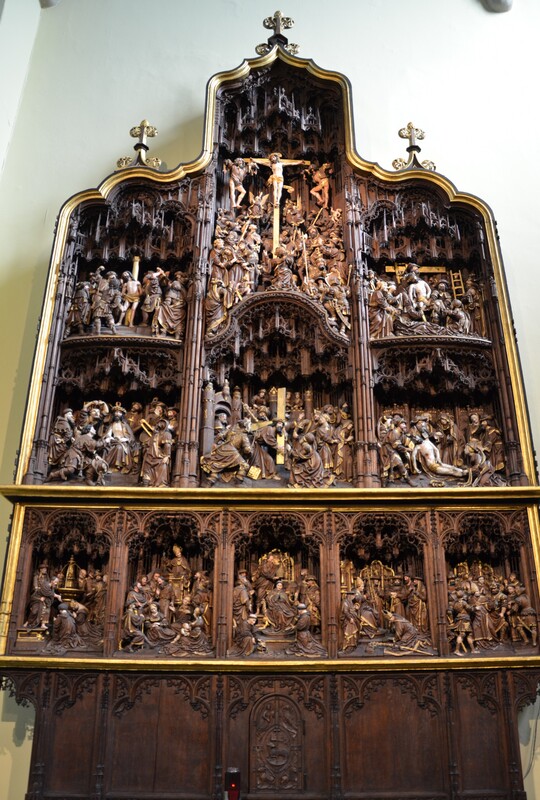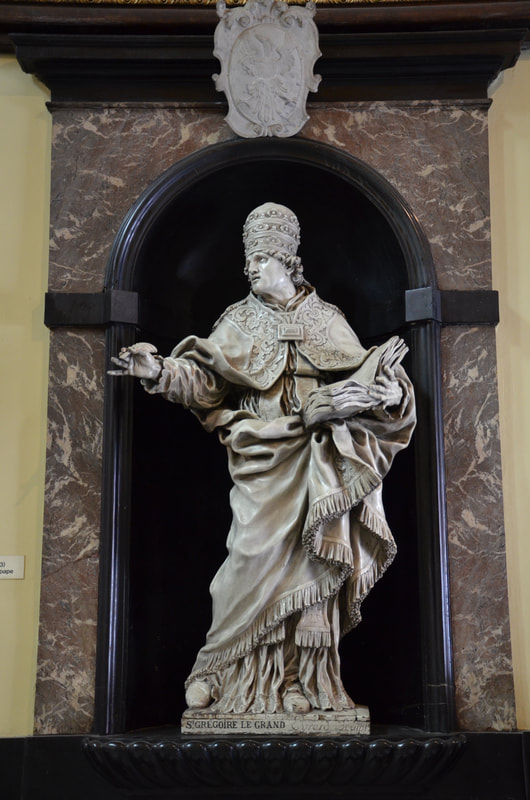Church of Saint Denis |
vertical divider
założono w 987 roku, w czasie panowania słynnego biskupa Notgera (972-1008). Do jego powstania przyczynili się trzej bracia, kanonicy św. Lamberta: Jean, Godescalc i Nithard.
Pochodzące z X wieku nawa główna oraz część transeptu są wspaniałymi przykładami stylu romańskiego. Zachodnia część kościoła to okres X-XII w. Gotycki chór został przebudowany pod koniec XIV wieku. |
W XVII wieku miała miejsce radykalna modernizacja wnętrza kościoła. Wprowadzono meble oraz dekoracje w stylu baroku i rokoko. Po Rewolucji Francuskiej (1797) kościół Świętego Dionizego stracił znaczną część swojego skarbca. Ponownie stał się kościołem parafialnym w 1801 roku, po podpisaniu Konkordatu pomiędzy Napoleonem a Papieżem Piusem VII. W 1987 roku świątynię poddano gruntownej renowacji.
Treasures of sacred art
Wnętrze kościoła skrywa kilka wspaniałych dzieł sztuki. Szczególną uwagę warto zwrócić na XVI-wieczne, rzeźbione w drewnie, retabulum (nastawa ołtarzowa) w końcu południowej nawy. Jego górna część, składająca się z sześciu gotyckich kwater, przedstawia pełną charyzmy mękę Chrystusa. Dolna sekcja to epizody z życia Świętego Dionizego.
Ołtarz główny z 1747 roku stworzono z marmuru i drewna. Otaczają go dwa posągi, wykonane z białego marmuru. Pierwszy, przedstawiający Dziewicę z dzieciątkiem, jest dziełem Roberta Verburga (1654-1720). Drugi to postać św. Dionizego, autorstwa Cornelisa van der Vekena (1665-1742).
Ołtarz główny z 1747 roku stworzono z marmuru i drewna. Otaczają go dwa posągi, wykonane z białego marmuru. Pierwszy, przedstawiający Dziewicę z dzieciątkiem, jest dziełem Roberta Verburga (1654-1720). Drugi to postać św. Dionizego, autorstwa Cornelisa van der Vekena (1665-1742).
Ambona, pochodząca z nieistniejącego już kościoła św. Urszuli, to doskonały przykład kunsztu rzeźbiarzy z Liege. W roku 1740 wyrzeźbił ją Gerard Van der Planck (1692-1750). Wspaniałe organy pochodzą z 1589 roku.
Pulpit w kształcie orła znakomicie ukazuje dynamizm baroku z końca XVII wieku. Spośród wielu rzeźb w kościele należy wymienić przede wszystkim rzeźby Świętego Trudona z końca XV wieku, Chrystusa na krzyżu (XVII), oraz dwie wspaniałe rzeźby z 1754 roku, autorstwa Guillaume Evrarda, przedstawiające Świętego Grzegorza (Papieża) i Świętego Jana Nepomucena, kanonika męczennika z Pragi.
Wizyta kończy się w klasztorze, miejscu bardzo pobożnym, które zawsze rozświetlają setki świec. Podziwiać tutaj można posąg Chrystusa. W 1936 roku kościół wpisano na listę zabytków. Znajduje się także na Liście Wspaniałego Dziedzictwa Walonii. Mistrz kryminału Georges Simenon w 1903 roku został ochrzczony w kościele Świętego Dionizego, a urodzony w Liege kompozytor André-Modeste Grétry, którego ojciec był muzykiem w orkiestrze kolegiaty, uczył się tu podstaw muzyki.
Pulpit w kształcie orła znakomicie ukazuje dynamizm baroku z końca XVII wieku. Spośród wielu rzeźb w kościele należy wymienić przede wszystkim rzeźby Świętego Trudona z końca XV wieku, Chrystusa na krzyżu (XVII), oraz dwie wspaniałe rzeźby z 1754 roku, autorstwa Guillaume Evrarda, przedstawiające Świętego Grzegorza (Papieża) i Świętego Jana Nepomucena, kanonika męczennika z Pragi.
Wizyta kończy się w klasztorze, miejscu bardzo pobożnym, które zawsze rozświetlają setki świec. Podziwiać tutaj można posąg Chrystusa. W 1936 roku kościół wpisano na listę zabytków. Znajduje się także na Liście Wspaniałego Dziedzictwa Walonii. Mistrz kryminału Georges Simenon w 1903 roku został ochrzczony w kościele Świętego Dionizego, a urodzony w Liege kompozytor André-Modeste Grétry, którego ojciec był muzykiem w orkiestrze kolegiaty, uczył się tu podstaw muzyki.
|
Adres:
Place Saint-Denis 4000 Liege |
Opening hours:
poniedziałek-niedziela: 10.00-17.00 |
Ticket price:
Free entrance |
